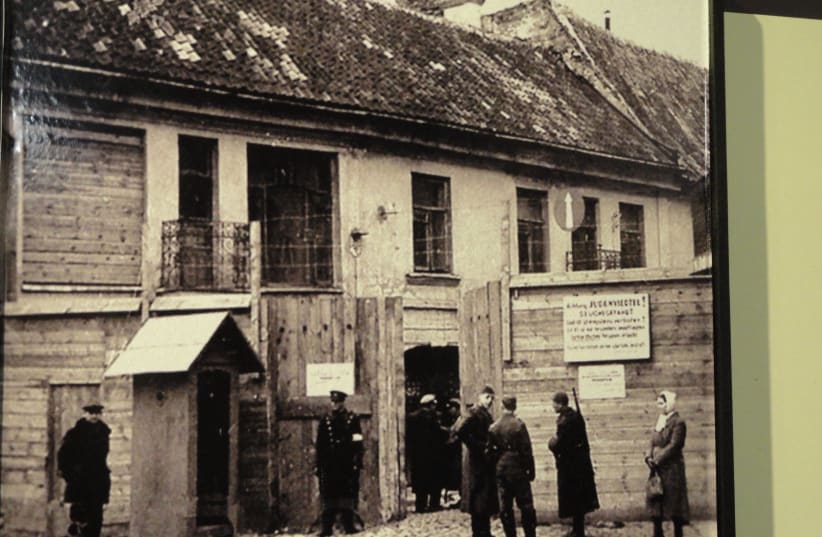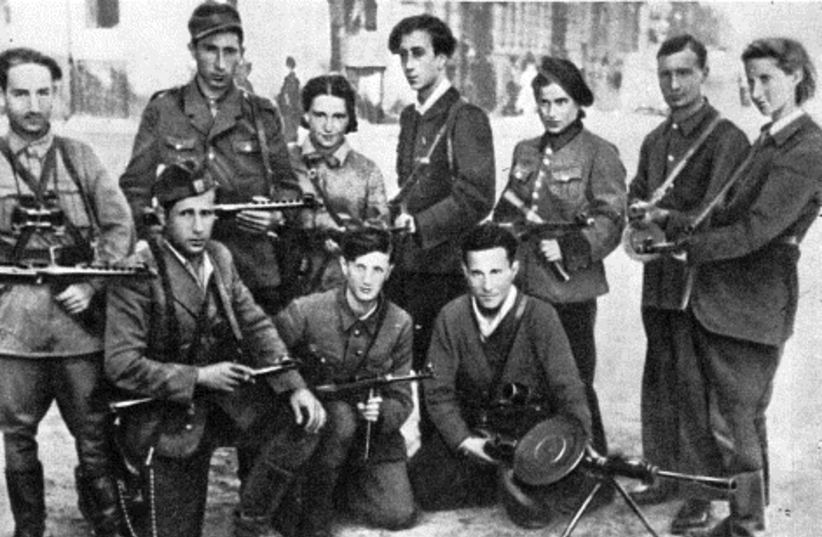September 23, 2021, marks 78 years since the liquidation of the Vilnius Ghetto during the Holocaust, resulting in thousands of casualties. The date this happened has been marked every year in Lithuania as their National Memorial Day for the Genocide Victims of Lithuanian Jews.
The Baltic nation has a rich Jewish history, with Ashkenazi Jews having maintained a presence since at least the 1300s. During the height of the Polish-Lithuanian Commonwealth, the Jewish community there experienced what many considered a Golden Age. However, fortunes would later change in the latter half of the 1600s when Hetman Bogdan Khmelnytsky of the Cossacks began what would be known as the Khmelnytsky Uprising, which in turn led to the Khmelnytsky Massacre, a massive and brutal wave of pogroms that saw Jewish communities throughout the commonwealth ravaged in what was the largest slaughter of Jews in Europe at the time.
But Jewry still thrived in parts of the commonwealth, specifically in Lithuania's greatest city, Vilnius. Known by some as the "Jerusalem of the North," the city had maintained a prominent Jewish population for centuries, and in the 17th century was home to the Vilna Gaon, one of the greatest and most influential rabbis of the Early Modern Era.
The city was also the birthplace of the Litvak movement, also known as Misnagdim — Jews who opposed hassidut. While their traditions have changed, Litvak Jews remain one of the largest segments of ultra-Orthodox Judaism to this day, being led in Israel at the time of writing by Rabbi Chaim Kanievsky.
Poland and Lithuania would both suffer heavily in the coming centuries and ended up being partitioned multiple times between the neighboring great powers of Austria, Russia and Prussia.
After World War I, Lithuania and Poland were separated and Poland retained control of Vilnius, renaming it Wilno.
In September 1939, Nazi Germany and the Soviet Union both invaded Poland, seizing control of the entire country. On October 10, the Soviet Union handed Wilno (renamed Vilnius) back to Lithuania as part of a mutual assistance treaty. However, in 1940, the Soviets would annex Lithuania.
According to the Lithuanian Statistics Department, there were around 208,000 Jews in the country at the start of 1941. These Jews suffered heavily later in the year after the Germans launched Operation Barbarossa and invaded the Soviet Union, quickly seizing control of Soviet-occupied Poland, the Baltics and Ukraine.
The destruction of Lithuanian Jewry was arguably one of the worst in the Holocaust, with Jews massacred in pits, as the Nazis had given the extermination of Lithuanian Jewry a high priority due to planned colonization of the country.
However, Jews remained in the Vilnius Ghetto. Before the Holocaust, the city's Jewish population ranged between 60,000 to 80,000, depending on estimates. Numerous massacres took place, and soon the population dwindled to just 20,000. However, several thousand Jews would continue to be killed in short intervals.
There was resistance, notably in the form of the Fareynikte Partizaner Organizatsye (FPO), also known as the United Partisan Organization. This group was formed by Abba Kovner, a Zionist activist who is famously thought to have written a manifesto titled "Let us not go like lambs to the slaughter!"
Partisan activity had been increasing in 1943 following the Warsaw Ghetto Uprising, which saw the Nazis become more wary of possible armed uprisings in the ghetto, as noted by Yad Vashem.
On June 21, 1943, the SS took control of the ghetto, and Heinrich Himmler ordered its liquidation.
This was not done all at once, however, but over time. Over the course of the summer, thousands of Jews were taken by transports to Estonia. This continued in September, with German and Estonian troops barring anyone from leaving the ghetto for work.
Clashes continued in the ghetto, particularly with the FPO trying to resist.
But ultimately, the ghetto was liquidated. Taking place from September 23-25, over 4,000 were sent to Nazi concentration camps in Poland, some 3,700 were taken to camps in Estonia and Latvia, and several hundred were simply taken to Ponary and shot.
Some Jews, around 2,500, still remained in the ghetto to be used as labor in work camps.
The remnants of the FPO, led by Kovner, eventually fled the ghetto into the forests, joining up with other forest partisans and later the Soviet Red Army, eventually liberating Vilnius in July 1944. Kovner would later go to Israel in 1947 and joined the Haganah and then the IDF's Givati Brigade.
The destruction of the Vilnius Ghetto represented the near extermination of Lithuanian Jewry, with around 95% of the country's Jews being killed.
According to the World Jewish Congress, there is one Jewish newspaper and one Jewish synagogue in Vilnius for the approximately 6,500 Jews living there.
"The tragedy of the Jewish people is the tragedy of Lithuania: the state lost hundreds of thousands of its citizens to the fires of the Holocaust," Lithuanian Culture Minister Liana Ruokytė-Jonsson said in 2018 at the 75th anniversary of the liquidation.
"The Jews contributed to the creation of the Lithuanian state and deeply affected all areas of life, enriching it with their unique cultural heritage. Together with all of you, I bow my head to remember the victims of the Lithuanian Jewish genocide – and believe that today we are strong and united enough to prevent such tragedies from happening again."

